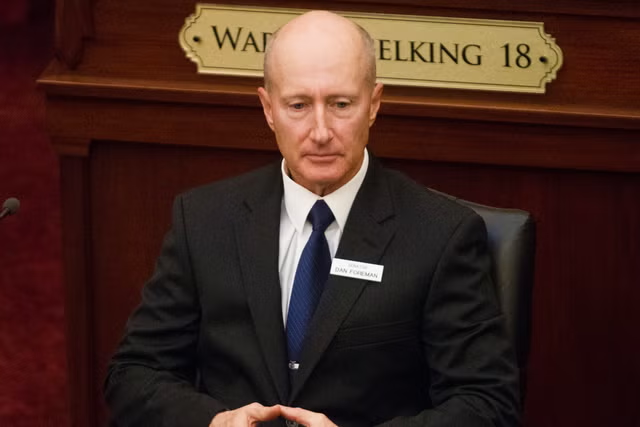Ask most party strategists, US pollsters or pundits and they'll tell you the 2024 presidential election could be the closest in decades, if not a century.
Given Joe Biden's 2020 win was decided by fewer than 45,000 votes in just three battleground states, that's quite the claim.
However, it is what the polls suggest. The contest between Kamala Harris and Donald Trump is super tight, both nationally and in the key states.
So, how much can we trust the polls?
It's a question many are raising after they famously got it so wrong four years ago.
The American Association for Public Opinion Research called it the biggest polling miss in 40 years, showing Mr Biden's lead over Mr Trump in the final two weeks of the campaign twice as large as it was when the votes were counted.
In 2012, pollsters significantly under-estimated Barack Obama's lead over Mitt Romney. But, while Mr Trump's 2016 victory over Hillary Clinton shocked many people, the error on the national polls was relatively small by comparison.
Of course, all polls come with uncertainty, some inbuilt error, and they are only a snapshot of the current situation, not a prediction of the outcome on polling day.
Crucially, though, there is evidence they also become a more reliable predictor of the outcome the closer we get to the election. It may seem obvious, but a year out from voting the polls are on average seven points different from the final tally for each candidate. By the last week of the campaign, this falls to less than three points.
Every day the polls tell us a little bit more about the result.
So, how should we read them?
One key thing to remember is the uncertainty around the estimated support for the candidates.
Uncertainty: 'Margin of error'
While pollsters publish a percentage figure for each, they also report a 'margin of error' to indicate the amount that support might vary.
For example, if a poll puts Mr Trump on 46% with a three-percentage point margin of error, it means that his support among the voting public should lie between 43% and 49%. If the same poll has Ms Harris on 49%, then her support should lie between 46% and 52%.
All this tells us is that the contest is close and either candidate could be leading.
Similar caution is required when looking at trackers using polling averages.
You might think that averaging the polls would reduce uncertainty, since random errors should cancel out. But some pollsters are consistently more accurate than others, while some may be systematically wrong in one direction. Adding them all together can reinforce those biases.
Read more on the election:
What exactly happens on the night of the US election?
How does Donald Trump keep his support so strong?

Predicting the turnout: Context matters
Who votes in an election is also critical to the outcome but predicting that is a tough ask for pollsters. Roughly a third of eligible Americans do not cast a ballot in presidential elections, and it isn't all the same people each time.
Context matters. It can make people more or less likely to vote. For example, potential changes to abortion laws seems to have mobilised many Democrats in the 2022 midterm elections.
The policies and performance of a candidate can also change the likelihood of more partisan voters to turnout.
The Electoral College: Why state contests can be crucial
The same considerations are needed when looking at state polls and arguably they are more crucial to determining which candidate is most likely to win the election.
The outcome of a presidential race is decided state by state, by the Electoral College, and the difference between that and the national vote has been growing.
Read more: What is the Electoral College?

In 2000 and in 2016, the candidate with the most votes nationally lost the election because they didn't win a combination of states that delivered the highest tally in the Electoral College.
This is why battleground state polls get so much attention and they are factored into the models of statisticians trying to forecast the outcome.
Of course, they have the same uncertainty and potential flaws as national polls. And the bad news is their recent performance hasn't been great.
In 2016 they suggested Ms Clinton would sweep the key states needed for a comfortable win in the Electoral College. In 2020, they fared even worse.
Some states have proven particularly difficult to poll accurately. In 2016 and 2020, the biggest misses were in Wisconsin, Michigan, North Carolina and Pennsylvania.
These, especially Pennsylvania, which of the group carries the most Electoral College votes, are all potentially decisive in 2024.
Keep up with all the latest news from the UK and around the world by following Sky News
Tap hereSo, what can the polls tell us?
The answer is plenty if you are looking for a steer on how people feel about a certain candidate or policy.
But, if you're trying to work out who's ahead in the race to be president, then all you can confidently say is the contest is really close and could come down to a small number of votes in a few states.
Disclaimer: The copyright of this article belongs to the original author. Reposting this article is solely for the purpose of information dissemination and does not constitute any investment advice. If there is any infringement, please contact us immediately. We will make corrections or deletions as necessary. Thank you.




